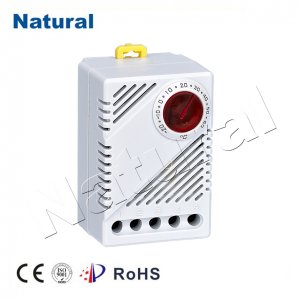In the ever-evolving world of home automation and climate control, one technology has emerged as a game-changer for enhancing both comfort and energy efficiency: the humidity controller thermostat. This innovative device offers homeowners the ability to not only manage temperature but also humidity levels within their living spaces, creating an environment that promotes well-being and reduces energy consumption.

Understanding the Importance of Humidity Control Before delving into the capabilities of a humidity controller thermostat, it’s essential to grasp the significance of humidity control in our daily lives. Humidity refers to the amount of moisture present in the air, and it plays a vital role in our comfort and health. High humidity levels can make a room feel stuffy and uncomfortable, while low humidity can lead to dry skin, irritated respiratory passages, and even damage to wooden furniture and flooring. The Power of Precise Humidity Control A humidity controller thermostat allows homeowners to maintain the optimal humidity level in their homes, typically between 40% and 60%. This range is considered ideal for human comfort and health. By keeping humidity within this range, you can: Enhance Comfort:The right humidity level makes your home feel more comfortable. It prevents that sticky feeling on hot days and helps your skin stay moisturized during the dry winter months. Improve Health:Proper humidity levels can reduce the risk of respiratory issues, allergies, and dry skin conditions. It’s particularly beneficial for those with asthma or allergies. Protect Your Home:Maintaining the right humidity level can also prevent damage to your home’s infrastructure. Low humidity can cause wooden floors and furniture to crack and warp, while high humidity can lead to mold growth. Energy Efficiency and Savings One of the most significant advantages of a humidity controller thermostat is its potential for energy savings. When you control humidity levels, you can also control your heating and cooling systems more effectively. Here’s how it works: Winter Energy Savings:In colder months, maintaining proper humidity levels can make your home feel warmer at lower temperatures. This means you can reduce your thermostat settings and save on heating costs. Summer Energy Savings:In the summer, when humidity levels are typically higher, a humidity controller thermostat can work alongside your air conditioner to make your home feel cooler without overworking the AC unit. This can lead to significant energy savings. Smart Integration:Many humidity controller thermostats are compatible with smart home systems. This allows you to set schedules, monitor humidity remotely, and make adjustments on the go, further optimizing energy efficiency. Choosing the Right Humidity Controller Thermostat When selecting a humidity controller thermostat for your home, consider the following factors: Compatibility:Ensure that the thermostat is compatible with your heating and cooling system. User-Friendly Interface:Look for a thermostat with an intuitive interface for easy programming and adjustments. Smart Features:If you want to integrate your thermostat with other smart home devices, check for compatibility with platforms like Amazon Alexa or Google Assistant. Energy Efficiency:Look for energy-saving features like adaptive learning, geofencing, and the ability to create custom schedules. Reliability:Read reviews and choose a reputable brand with a track record of reliability. In conclusion, a humidity controller thermostat is a valuable addition to any home, providing not only comfort and health benefits but also substantial energy savings. By maintaining optimal humidity levels, you can create a more pleasant living environment while reducing your carbon footprint and energy bills. Embracing this technology is a step towards a more sustainable and comfortable future.